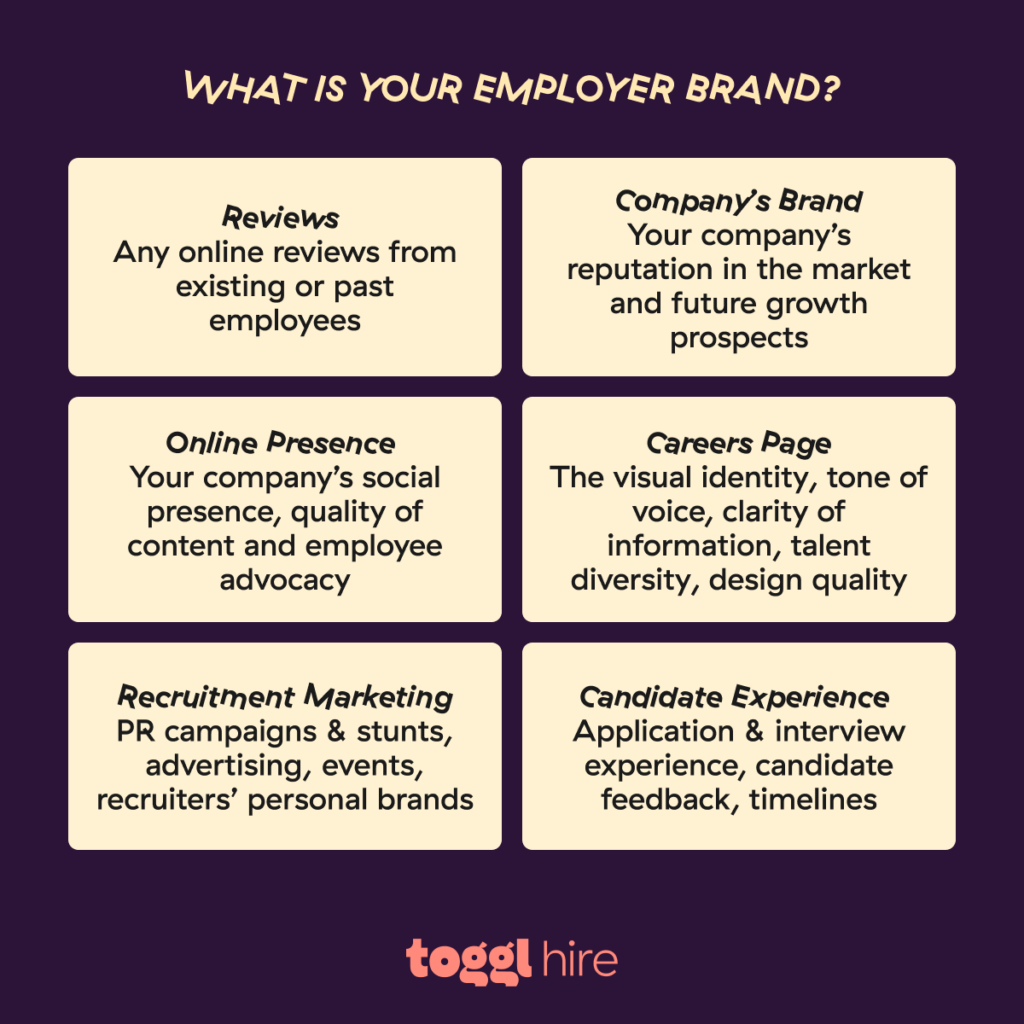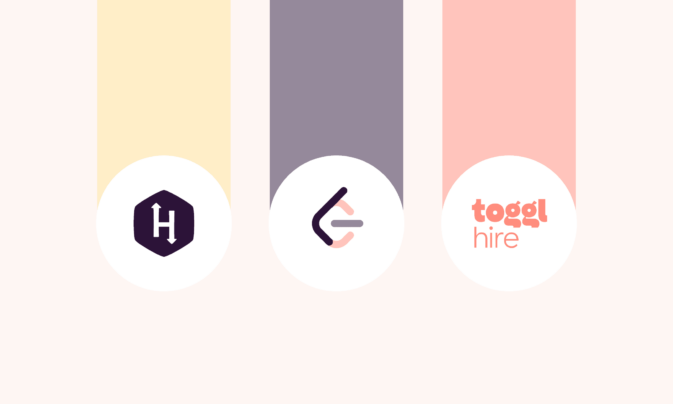Your company’s job offer acceptance rate is an important recruiting metric that reflects how effectively your organization attracts and retains candidates.
A high OAR often signals that you have a strong employer brand and make competitive job offers, while a low acceptance rate might indicate underlying issues in the recruiting process or overall perception of the company.
As a hiring manager, you want to see that job offer acceptance email slide right into your inbox. But to get there, you might need to address a few different areas first. Let’s start with that, and then we’ll teach you how to calculate OAR, factors that can impact it, and strategies to improve it.
TL;DR — Key Takeaways
Job offer acceptance rate is the likelihood of an applicant accepting a new position after receiving the job offer letter.
It’s calculated by dividing the number of job offers accepted by the total number of offers extended and multiplying by 100 to get a percentage.
What’s considered a good acceptance rate depends on various factors, such as the industry, position, market circumstances, and workforce trends. For example, overall average acceptance rates today are in the 70s, but they were in the 90s in 2017.
Lower acceptance rates are caused by uncompetitive compensation packages, long hiring processes, poor candidate experiences, and a lack of flexible working conditions.
Strategies to boost the number of people who accept and join the company include investing in employer branding, reviewing your policies and benefits, and regularly gathering feedback from the team.
What is job offer acceptance rate?
The offer acceptance rate (OAR) is the percentage of candidates who accept a formal job offer. It’s a simple calculation — measured by dividing the number of offers accepted by the total number of offers extended by the company.
When a hiring manager sends out a new job offer, they’re hoping for a job acceptance email back. But that’s not always the case. Candidates decline job offers all the time for various different reasons. For example:
They received or are expecting an offer from another company
They received a counter-offer from their existing employer to stay on
They’re not fully satisfied with the offer
Before sending back a formal acceptance, most candidates will double-check the job offer email for the full salary package, description of the new role, and start date. Even the most interested and eager candidates can be put off if the offer letter fails to meet their expectations.
Keeping an eye on this metric will help you know how successful you are in attracting and hiring the right people. It can indicate how desirable your company’s compensation package or employer brand is, as well as the overall candidate experience of your recruitment cycle.
How to calculate job offer acceptance rate
There’s a simple formula you can use to keep track of your OAR:
OAR = (# of job offers accepted)/(# of total offers) x 100

Here’s how you can use it:
Decide the time period you’re tracking. Will you be looking at it yearly or quarterly?
During that time period, keep track of the total number of job offers sent out. This is your denominator.
Out of those offers extended, how many were accepted? That number goes on top of the fraction.
Finally, divide the top by the bottom and multiply by 100 to convert it into a percentage. And there you have it — your job offer acceptance rate!
Here’s an example: Say you decide to track your job offer and acceptance rate over the year. In 2023, you sent out 55 job offers, 38 of which were accepted. Using our formula, the calculation would read:
OAR = (jobs accepted/jobs offered) x 100
OAR = (38/55) x 100 = 69%
It’s a good idea to keep an eye on how this percentage fluctuates over time. Any big changes might indicate a change in your offer’s attractiveness compared to the wider market (either positive or negative!). Staying on top of this can help you assess and improve job offers and recruitment strategies as needed.
What is a good offer acceptance rate?
A good OAR varies by industry and role. Ashby’s 2023 Trend Report found that out of 250,000 applications that reached the offer stage, overall OARs have remained steady over the last two years, fluctuating between 70% and 75%.
However, this figure varies greatly when broken down by job title and industry. Business-focused roles, such as sales, marketing, customer service, and finance, consistently have 20% higher OAR (roughly in the low 80s) than technical roles, such as engineering, data analysis, design, and product positions, which fluctuate between 63% and 68% in 2022.
A similar study by Lever shows comparable data, indicating an average OAR of 80% across industries.
Keep in mind that the average is not a fixed number and is likely to change with economic conditions and workforce trends.
What negatively affects job offer acceptance rates?
There are lots of factors that can affect this rate. If your OAR is lower than you’d like, here are some likely culprits:
Uncompetitive compensation packages
A starting salary that is lower than expected can tank job acceptance rates. To avoid this, employers should conduct regular salary benchmarking to stay abreast of market conditions and the average starting salary for the position you’re looking to fill.
Clearly write the salary in the job description. This ensures that the employer and candidate’s expectations are aligned from the start and that there are no uncomfortable surprises later on in the hiring journey.
It’s not always all about the salary. Today’s candidates value competitive compensation packages that cover more than just basic pay, such as health and wellness benefits, a study grant, a laptop, and other home office equipment.
Lengthy hiring processes
On average, it takes 44 days from job application to start date. This number creeps higher the more specialized the job role. When you consider that top talent is off the market within 10 days, there’s a big gap to fill.
A drawn-out hiring cycle will lead to candidates feeling frustrated and disengaged before you’ve even hired them. It might even lead to them sending an acceptance email elsewhere.
What can you do? Finding ways to shorten the hiring process is in everyone’s best interest. One of the best ways to go from a sea of resumes to your candidate shortlist is with skills testing.
Skills tests work best when combined with other methods, like video intros or resume screening. Why? Not only does it help sort through your candidates at record speed, but it also helps candidates to self-select themselves in or out of the right job for them.
Poor candidate experience
25% of candidates who have had a poor candidate experience will actively discourage their network from accepting or applying to join the company. On the flip side, candidates who have a positive experience are 38% more likely to send you an acceptance letter.
Lack of flexibility
77% of employees would rather take a flexible job than accept a pay raise. Enforcing rigid work conditions is a sure-fire way to repel the best talent out there. In fact, it is the most highly-desired company fringe benefit of 2024. Either way, it’s crystal clear that modern job-seekers value flexibility more than ever.
Poor employer branding
Image is everything. And a poor one can cost you your best candidates.
Negative reviews on platforms like Glassdoor or bad social media comments can damage your company name. All the smiling employee testimonials don’t mean anything if coupled with bad PR.
Not only that but a big discrepancy between what you write on your culture page and what actual ex-employees say kills any credibility in your employer brand (who trusts the guy who’s paid to say they love their company?).

How to increase your offer acceptance rate
When trying to improve your OAR, there are many things to consider. Luckily, every obstacle has a solution.
Regardless if you are a new employer or a seasoned HR professional, here are a few strategies to help you improve your appeal to candidates and land that coveted YES.
Enhance compensation packages
It’s important that your compensation packages align with industry standards and reflect the value candidates bring. However, it’s also worth taking a step back and thinking through what benefits are most valued by your employees when crafting an attractive package.
Include bonuses, private health insurance, retirement plans, and perks like gym memberships or wellness programs. These perks are crucial, as they might sway a candidate’s decision to become an employee.
Perhaps the salary isn’t where they’d like it to be, but perks like unlimited annual leave or flexible work policies can really make up for it. Make sure you’ve thought through your compensation package as a whole, base it on market research of what employees want, and include it all in your written job offer letter or acceptance email.
Expedite the hiring process
Make sure you’ve intentionally designed your recruiting process to be as efficient and streamlined as possible. Do you really need three rounds of interviews? Are you effectively filtering resumes? Are you responding to candidates when you say you will?
There are plenty of recruitment tools that can help with this, from full-cycle hiring platforms like Toggl Hire to skills tests and clever communication tools to make sure job candidates are always in the loop.
Ensure a standout candidate experience
We’ve written extensively on the candidate experience, but here are our top tips for a quick TLDR:
Timely and transparent communication: Be clear about the next steps to make candidates feel supported every step of the way. When you say they’ll hear back by Friday, make sure they actually do. Address candidates by name and personalize messages as much as you can.
Clear job descriptions and realistic timelines: Your first impression comes from your job description. Make sure it’s a good one by crafting a realistic description of the responsibilities. With that, it’s always good practice to give a candidate insight into the whole recruitment cycle so they know what to expect and whether they want to invest their time into a multi-stage process.
Prompt and constructive feedback: 94% of candidates want to get post-interview feedback, but under half actually get it. That’s an easy win if you want to stand out from your competition.

Offer flexible working conditions
No, this doesn’t mean you need to let everyone work from a beach, coconut in hand (not that everyone would want to, anyway, or that that’s even feasible or fun).
Instead, it could be something as simple as flexible work hours so parents can easily manage the school run or introducing a hybrid model where you only mandate employees in the office Tuesday through Thursday.
Want more inspiration regarding flex work setups? Steal some great ideas from our recent article on flexible working hours.
Invest in employer branding
Only 19% of employees feel a strong alignment between what their employer says about themselves and their experience working there. Get into the 19% by showcasing your company culture, values, and employee experiences.
Make sure this is authentic by regularly engaging with current and former employees. Share their stories and ensure your online presence reflects your workplace’s strengths. This boosts credibility and helps reduce recruitment challenges like talent acquisition or low offer acceptance rates.
Listen to feedback and adapt
Gather feedback from candidates throughout the recruitment and interview process. Anonymous surveys and follow-up communications are great ways to gather insights on their experiences.
Use this additional information to identify areas for improvement and adapt your talent acquisition strategies accordingly. Continuously refining your approach based on candidate feedback helps you stay competitive and improves acceptance rates.
Improve your hiring process with Toggl Hire
Toggl Hire is a leading recruitment software designed to optimize the recruitment process every step of the way. By streamlining all recruitment efforts, it helps companies make the right decisions in less time.
With skills assessments, you can instantly see who has what it takes to fill the position and shortlist your candidates in one click. Automated workflows help your team attract top-quality candidates and communicate instantly to the rest. Everyone knows where they stand, with built-in transparency and direct and fast communication.
Create a free account to see how it all works!

Julia Masselos is a remote work expert and digital nomad with 5 years experience as a B2B SaaS writer. She holds two science degrees Edinburgh and Newcastle universities, and loves writing about STEM, productivity, and the future of work. When she's not working, you'll find her out with friends, solo in nature, or hanging out in a coffee shop.






